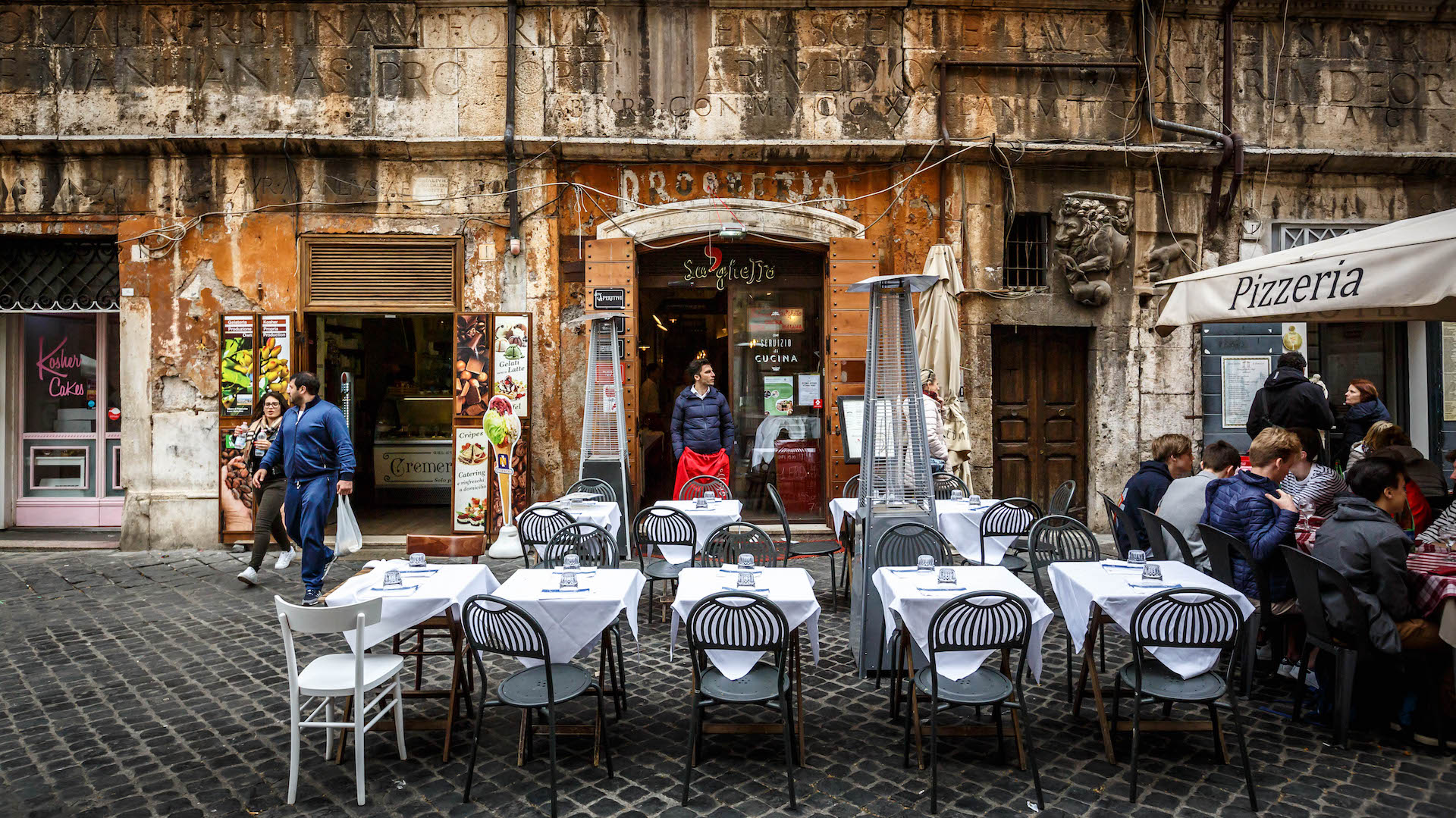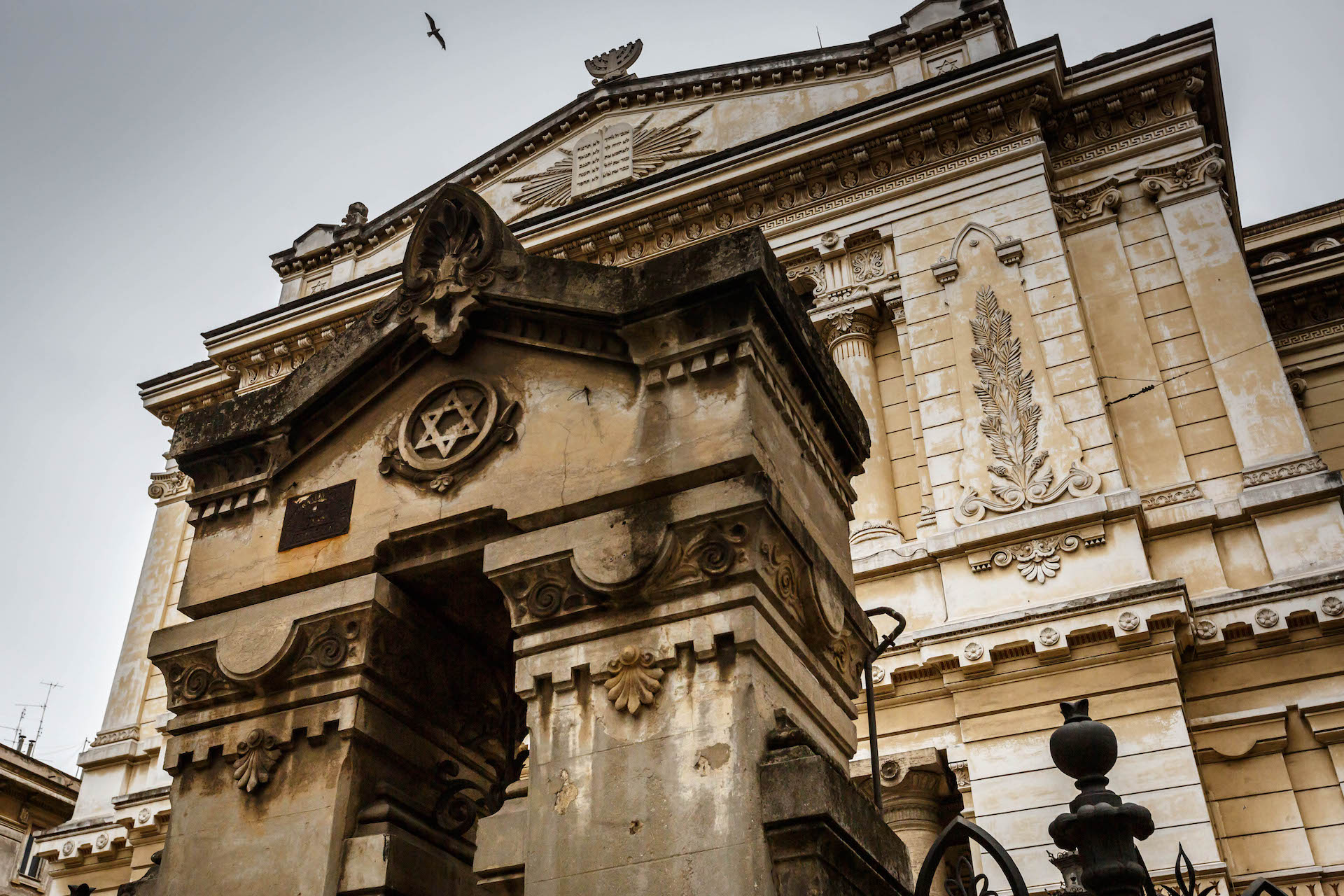
At almost $1,300 per square foot, the real estate in today’s Jewish neighborhood of Rome doesn’t even hint at the grief and loss experienced in its homes over the centuries. Take a quick walk around the neighborhood and you’ll see trendy kosher restaurants, bakeries, and shops with Jewish paraphernalia. But the tragic history of Jews in Rome—and its connection to the Catholic Church—tells a tale we would do well to learn, mourn, and be changed by.
Early Jewish Presence in Ancient Rome
The Jews in Rome are the oldest Jewish community in the Western world. The book of Maccabees recounts that Jews received permission to live peaceably in Rome around the second century BC. After the Roman general Pompey conquered Jerusalem in 63 BC, however, many Jews were forcibly brought to Rome as slaves. Historians think that by the time Christ was born, there may have been well over thirty thousand Jews living in Rome.
After Jews revolted against Roman rule in Jerusalem, the Romans started a war that ended with the destruction of the temple in AD 70. The historian Josephus claimed that ninety-seven thousand people in Jerusalem were captured or enslaved. Many Jews consequently suffered forced resettlement to Rome.
When Emperor Constantine legalized Christianity in AD 313, he ordered various restrictions on the Jews. Despite these, Jews seemed to live in relative peace in Rome for the next several centuries. Pope Gregory the Great even affirmed that Jews had the right to their own religion and should not be bothered. Some elite merchants, doctors, and bankers even arose among the Jews in Rome.
Raise the Walls and Gallows
In the fifteenth century, however, things began to shift. Two different popes cracked down on the Jews. Imposed financial restrictions wreaked havoc on Jewish bankers. Jews were barred from showing themselves publicly during the week of Easter and were prohibited from selling medicine to Christians.
The Reformation and the ensuing Catholic Counter-Reformation swept Europe in the sixteenth century. In the midst of this upheaval, Pope Paulus IV issued a papal bull, Cum Nimis Absurdum, in the year 1555. The bull stated that Jews of the Papal States were required to live in a specific quarter, known as the Jewish Ghetto, by the Tiber River in Rome. Many Jews already lived in this area. Rome began walling up the neighborhood, leaving space for only one entrance and one exit.
Jews could leave the ghetto by day but had to return before the gates shut at sunset. When they ventured outside they had to wear yellow, the shameful color worn by prostitutes. Economic restrictions only afforded them jobs in moneylending and trading secondhand clothing.
Within three months, the walls and gate were up. Within six months, Jews lost all their real estate. All in all, it was economically devastating and utterly dehumanizing. Gallows near the gate, although never used, were a constant threat.
Over the years, the ghetto’s population grew from two thousand to eight thousand people. As Jews crowded into the ghetto, they built up because they could not build out. The Tiber River flooded the streets, causing filthy living conditions that spread sickness and disease.
The Goal of the Ghetto
The Catholic Church maintained much of this bull, including the ghetto, for over three hundred years. The natural question we are left with is why? Let’s go back to the papal bull itself.
Since it is completely senseless and inappropriate to be in a situation where Christian piety allows the Jews (whose guilt—all of their own doing—has condemned them to eternal slavery) access to our society and even to live among us . . . they, won over by the piety and kindness of the See, should at long last recognize their erroneous ways, and should lose no time in seeing the true light of the catholic faith.
The Catholic Church carried out these actions in the name of Christian evangelism. Anyone who converted to Catholicism was free to leave the ghetto.
A nearby church, San Gregorio della Divina Pieta, still stands just outside the former ghetto neighborhood. On Saturdays, the Jewish Sabbath, Jews were required to attend this church and listen to sermons. On the outer entrance of the church, a verse in Hebrew from the book of Isaiah warns the Jews: “All day long I have held out my hands to an obstinate people, who walk in ways not good, pursuing their own imaginations.” Many Jews attended services at the church with wax in their ears.
“Gravely Deplorable Manifestations”
On September 20, 1870, Victor Emmanuel II took over Rome, became its first king, and ended the reign of the pope. Under the king, the ghetto was abolished. Finally—for the first time—Jews in Rome received equal rights as citizens.
Unfortunately, this wasn’t the end of the story for Jewish suffering in Rome. Racial laws under Mussolini in the 1930s afflicted the Jews, but the Nazi takeover of Rome brought new terror.
October 16, 1943, is a day Roman Jews will never forget. It was a rainy Saturday morning. At five o’clock in the morning, Nazis came to the doors of the Jewish homes and handed over a note saying the Jews had twenty minutes to prepare their luggage. Everyone was to go, including women, children, and the aged. The Nazis took 1,022 Jews that day. Two hundred and seventy-two were younger than fifteen. More than 100 were younger than five years old. Many were taken to Auschwitz. Only sixteen would come back.

The Great Synagogue of Rome stands just on the edge of the old Jewish Ghetto. It was built on the original site of the synagogue present during Jewish oppression in Rome. Photo by Patrick Royals.
Today, copper bricks on the streets around the former ghetto indicate the houses where people were taken. A Holocaust memorial plaque in the ghetto says of the children, “They had not even begun to live.”
Although many Catholic individuals helped the Jews at the time, the Church itself was silent. Pope Pius XII supposedly knew about the deportations but said nothing against them. Years later, the Catholic Church’s declaration of Pope Pius XII as “venerable” opened many bitter wounds for Jews.
Over the centuries the Jews developed a proverb, “The persecution will end when the pope enters the synagogue.” In 1986, Pope John Paul II turned a new page in the troubled history book of the Catholic relationship with Jews when he visited a synagogue in Rome. The pope declared that the years of discrimination against the Jews were “gravely deplorable manifestations.”
Lessons for Today
How can we even begin to process centuries of “deplorable manifestations”?
We can start by reaffirming the equal dignity and worth afforded to each person as co-image bearers of God. It’s easy to judge those in history books, but let’s look at our own hearts. Are there areas where we think we’re better than others? Let’s renew our commitment to view every person with the honor they deserve as fellow image bearers of God, no matter how divergent their beliefs are from ours.

Photo by Patrick Royals
Let’s also remember that hearts will change only by the work of the Holy Spirit. We faithfully and lovingly proclaim truth. And we pray. But the actual work of conversion is by nothing we can do. It is a spiritual reality brought by the Holy Spirit who opens blind eyes. Let’s repent of areas where we are trying to manipulate our nonbelieving friends.
Every year, Jews around the world celebrate Yom Kippur, the Day of Atonement. With longing and hope, they proclaim, “Next year in Jerusalem.” Revelation 21 describes a new Jerusalem where God will dwell with his people through Immanuel, God with us. Unlike the ghetto, the gates of the new Jerusalem will never shut. The “glory and honor of the nations” will be there.
One day, may we embrace many Jesus-followers from among the Roman Jews.
“Next year in Jerusalem.”
Madeline Arthington is a writer living in Central Asia.

